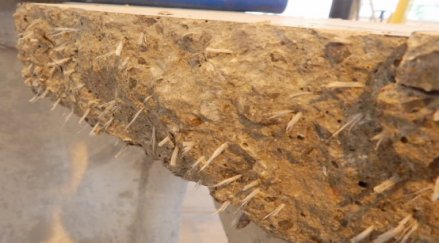Researchers from James Cook University in Australia have created a type of concrete that's reinforced by plastic waste, rather than steel. The technique, which is a first in Australia, will greatly reduce the environmental impact of concrete, and we can't help but wonder why we're not doing this already.
"Using recycled plastic, we were able to get more than a 90 percent saving on CO2 emissions and fossil fuel usage compared to using the traditional steel mesh reinforcing," said Rabin Tuladhar, the lead researcher from JCU in a press release. "The recycled plastic also has obvious environmental advantages over using virgin plastic fibres."
The concrete was reinforced using recycled polypropylene plastic instead, and strength and durability tests show that the end result could be used to build footpaths and precast elements such as drainage pits and concrete sleepers.
Tuladhar is now working with local concrete producers to find out how to apply the findings more broadly. He's also working on making concrete more sustainable in other ways, such as replacing natural sand with 100 percent crusher dust, which is a byproduct of stone quarries, and replacing cement with up to 30 percent mining waste.
Concrete is the second most-used material on Earth, second only to water, and production of cement, one of its key ingredients, is responsible for 5 percent of the world's annual CO2 production. Which may not sound that much in the grand scheme of things, but if we can reduce those emissions while also doing something useful with our hundreds of thousands of tonnes of plastic waste each year, then that's pretty damn exciting. We can't wait to see the new material in action.
Want to work on ground-breaking technology? Find out more about studying at JCU.
Source: JCU
